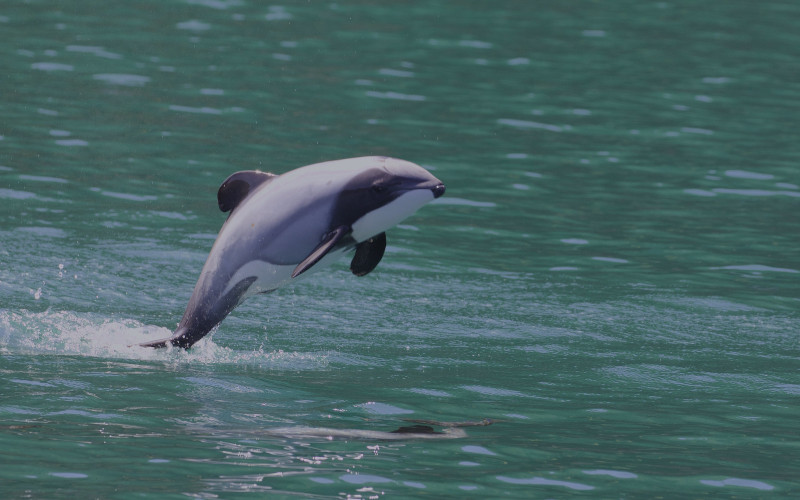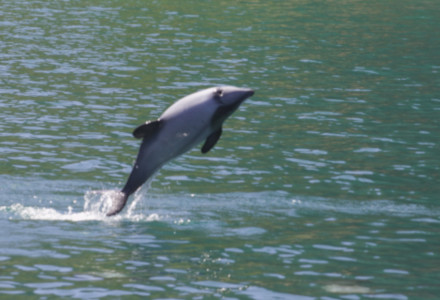
Hector’s Dolphin Facts
- The term of Hector’s Dolphin serves as the accepted common name for a particularly special species of dolphin. The marvel also bears another, more official name. That’s the term for the species more commonly used by most professional researchers.
- That’s the hard to pronounce name of the Cephalorhynchus hectori, however. By either name one chooses to use, it remains a special, as well as beautiful, animal. In fact, this stunning animal stands out from its brethren for two separate reasons.
- Firstly, it ranks as the smallest of all known marine dolphins. While distinguishing, this status is of no overall importance. Secondly, it also ranks as the rarest of all its kindred. That status, unlike the first, is indeed of importance to those who love Nature.
- The species derives its common name from Sir James Hector. He examined the first specimen of the mammal. He was, nonetheless, not the first to scientifically describe it. That honor belongs to the Belgian zoologist, Pierre-Joseph van Beneden.
- Finally, given its scant numbers, along with its limited range, the IUCN currently lists the Hector’s Dolphin as Endangered. This status appears on the organization’s Red List. Not surprisingly, its greatest threats likely consist of habitat loss and climate change.
Related Articles
Hector’s Dolphin Physical Description
To simply say that the Hector’s Dolphin evolved as the smallest of all known marine dolphins is an understatement. In point of fact, it remains quite significantly smaller than most, though not all, of them. Yet, the evolutionary reason for this remains undetermined.
Like many cetaceans, as well as other creatures, though, it displays the physiological trait of sexual dimorphism. In its case, this results in the females attaining a larger size than their male counterparts. Yet, the overall variation only equates to about 5 – 7 % difference.
That being said, an average body length for the marvelous creature ranges between 3 ft 11 in to 5 ft 3 in (1.2 – 1.6 m). The overall body weights also, quite understandably, vary. A typical weight, though, for both genders, equals roughly 88 – 132 lb (40 – 60 kg).
The general coloring is a light gray. Closer inspection, however, reveals the presence of a definite pattern. Its sides and back tend to be light gray. The flukes, flippers, and dorsal fin, meanwhile, appear black. The eyes are further surrounded by a black mask.
- Kingdom: Animalia
- Phylum: Chordata
- Class: Mammalia
- Order: Artiodactyla
- Family: Delphinidae
- Genus: Cephalorhynchus
- Species: C. hectori
Hector’s Dolphin Distribution, Habitat, and Ecology
The gorgeous Hector’s Dolphin consists of two subspecies. These are known as the South Island Hector’s Dolphin, and the Maui Dolphin. Both subspecies, though, share the same general habitat range. More specifically, both appear only in the waters around New Zealand.
Though both subspecies live in separate areas in that range, they nonetheless share habitat preferences. These preferences consist of very murky coastal waters at shallow depths. In fact, these beautiful cetaceans rarely appear at depths of more than 330 ft (100 m).
Further, the majority of sightings occurred in areas with depths of less than 160 ft (50 m). The animals also display a slight seasonal variation in this behavior. As a result, most live closer to shore during the spring and summer, and slightly further out the rest of the year.
While the Hector’s Dolphin evolved as a carnivore, its diet remains generalist in nature. But, the choice of prey depends much more on simple size than species. Most if its diet consists of species less than 4 in (10 cm) in length. These mainly consist of small squid and fish.
In turn, however, this magnificent creation of Nature itself has few natural predators. Not surprisingly, though, the few it does have likely come as no surprise. That’s due to the fact that only various sharks and the Orca prey on this mammal with any degree of frequency.
As its relatives, this mammal typically lives in small groups called pods. For the Hector’s Dolphin, these generally consist of about 5 individuals. Typically, these small groups consist of the same sex. Larger groupings generally contain both sexes, both are usually temporary.
Species Sharing Its Range
Check out our other articles on 7 Herbaceous Plants of Central America, Black-and-white hawk-eagle, Madeira, Wollemi Pine, Red Pierrot, Plumed Basilisk, Purple Frog

